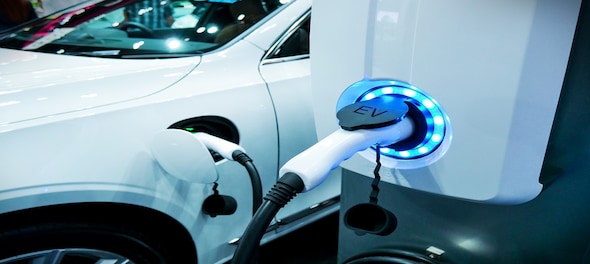
Connectivity has become an integral part of modern life, and its role in the automotive industry is no exception. The Internet of Things (IoT) has enabled vehicles to become connected devices, facilitating seamless communication between vehicles, infrastructure, and even pedestrians. This connectivity opens a plethora of possibilities, from real-time traffic updates to vehicle-to-vehicle (V2V) communication, transforming the way we interact with our vehicle and the world around us.
The convergence of electric vehicles and connectivity gives birth to smart mobility solutions, which are reshaping the traditional concept of transportation. These solutions leverage real-time data, advanced algorithms, and artificial intelligence to optimise the movement of vehicles, reduce congestion, enhance safety, and create a more sustainable future.
The use of Internet of Things (IoT) technology in electric two-wheelers is one such example. Real-time data transmission is made possible by IoT-enabled vehicles, giving riders and passengers access to vital details like battery life, route planning, and local charging stations via smartphone applications.
A survey conducted by The Bureau of Energy Efficiency (BEE) in 2023 revealed that 85 percent of electric two-wheeler users found the IoT features to be valuable in streamlining their daily commutes. Smart mobility solutions will analyse data from multiple sources, such as GPS, traffic cameras, and weather forecasts, to provide consumers with the most efficient routes, reducing travel time and congestion on the roads. Vehicle-to-vehicle (V2V) communication allows vehicles to exchange information about their speed, position, and direction with nearby vehicles.
This real-time communication will enhance safety by providing early warnings for potential collisions and enabling autonomous driving features. In emergencies, V2V communication can prevent accidents and save lives.
Additionally, the building and improvement of charging infrastructure are greatly aided by the convergence of electric vehicles and connectivity. Electric two-wheelers may help build a reliable charging network by detecting high-demand regions and recommending suitable sites for future charging stations through real-time data exchange.
With connected charging stations, consumers can access real-time data on available charging points, charging speeds, and pricing information through mobile apps. Moreover, the system can optimise charging schedules to manage peak electricity demand, ensuring the efficient use of energy resources. Vehicle-to-grid (V2G) integration will allow electric vehicles to not only draw power from the grid but also feed energy back into it when necessary. Through bidirectional charging technology,
EV batteries can serve as energy storage units, providing grid support during peak demand periods or power outages. This symbiotic relationship between EVs and the grid enhances grid stability and maximises the utilisation of renewable energy sources.
The convergence of EVs and connectivity paves the way for autonomous and connected fleets. Companies can optimise fleet management through real-time tracking, predictive maintenance, and efficient route planning, leading to cost savings and reduced emissions. Shared electric and autonomous vehicles offer a sustainable and convenient transportation alternative for urban dwellers.
While the convergence of electric vehicles and connectivity presents promising opportunities, it also comes with challenges that need to be addressed, like
The automotive industry is at the cusp of a momentous revolution where electric vehicles and connectivity technologies are synergistically driving smart mobility solutions. The increasing adoption of electric vehicles is a crucial response to the global call for combating climate change and reducing carbon emissions. Simultaneously, connected technologies are propelling the industry towards intelligent transportation systems, elevating the efficiency, safety, and convenience of mobility. As these advancements continue to unfold, the transformational revolution in the automotive sector promises a greener, smarter, and more sustainable future for mobility.
—The author, Sanjay Behl, is CEO and Executive Director, Greaves Electric Mobility Pvt Ltd. The views expressed are personal.
(Edited by : C H Unnikrishnan)
First Published: Sept 11, 2023 7:41 PM IST
Check out our in-depth Market Coverage, Business News & get real-time Stock Market Updates on CNBC-TV18. Also, Watch our channels CNBC-TV18, CNBC Awaaz and CNBC Bajar Live on-the-go!


Congress nominee from Puri Lok Sabha seat withdraws, citing no funds from party
May 4, 2024 12:00 PM
Lok Sabha Polls '24 | Rahul Gandhi in Rae Bareli, why not Amethi
May 4, 2024 9:43 AM
Supreme Court says it may consider interim bail for Arvind Kejriwal due to ongoing Lok Sabha polls
May 3, 2024 4:57 PM
10% discount on fare on Mumbai Metro lines 2 and 7A on May 20
May 3, 2024 2:40 PM

